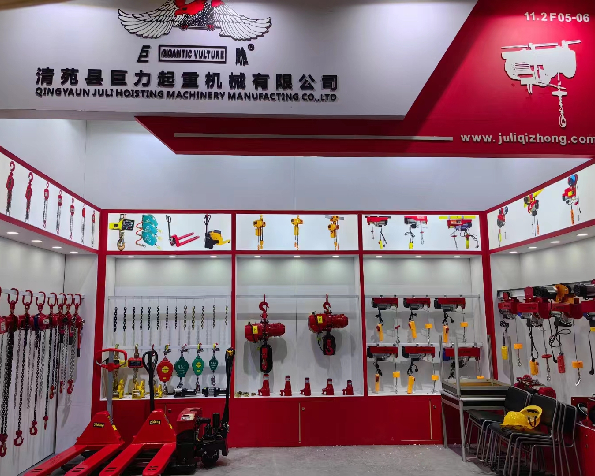


Understanding Manual Lever Hoists Their Functionality and Advantages
Manual lever hoists, also known as lever block hoists, are versatile tools used for lifting, pulling, and securing heavy loads. Given their design and functionality, they are preferred in a variety of industries, including construction, manufacturing, and shipping. This article delves into the workings of manual lever hoists, highlighting their advantages and applications.
Functionality of Manual Lever Hoists
A manual lever hoist consists of a few key components the lever arm, chain, hook, and ratchet mechanism. The user operates the hoist by pulling down on the lever, which in turn creates a mechanical advantage, allowing for the lifting of heavy objects with minimal effort. The ratchet mechanism ensures that the load remains securely lifted once it has been raised. As the lever is pulled down, the chain wraps around a drum, gradually lifting the load attached to the hook.
One of the notable features of lever hoists is their ability to operate in both vertical and horizontal lifting situations. This makes them particularly useful in confined spaces where other lifting equipment may not fit. Additionally, they can be used for tasks such as tensioning cables, securing loads, and even positioning materials in industrial settings.
Advantages of Manual Lever Hoists
1. Portability Unlike electrical hoists, manual lever hoists do not require a power source, making them easy to transport and operate in various environments. Their compact and lightweight design allows workers to carry them to almost any job site without the need for additional equipment.
2. Durability Manual lever hoists are designed from robust materials, ensuring they can withstand the demands of heavy lifting. Many models are constructed from high-quality steel, providing reliability and strength over time.

3. Cost-Effectiveness Compared to powered hoists, manual lever hoists are generally more affordable. They require minimal maintenance and have fewer components that can break or malfunction, leading to lower long-term costs.
4. User Control With manual lever hoists, the operator has full control over the lifting process. This allows for precision when positioning loads, which is critical in many applications where accuracy is essential.
5. Versatility Manual lever hoists can handle a diverse range of weights, making them suitable for various lifting tasks. They can also be used in different industries, from construction and maintenance to entertainment, where they pack a punch in portability and effectiveness.
Applications of Manual Lever Hoists
Manual lever hoists are employed in many scenarios, including
- Construction Sites For lifting and positioning heavy materials such as beams and steel trusses. - Warehouse Operations To move and secure heavy pallets and equipment without the need for forklifts. - Marine Applications For hoisting sails, anchors, and other gear on boats and ships. - Automotive Repair To lift engines or other heavy components during maintenance or refurbishment processes.
In conclusion, manual lever hoists represent a practical and efficient solution for lifting and securing loads across various industries. Their portability, durability, cost-effectiveness, and user control make them an indispensable piece of equipment for many professionals. Whether in a busy construction site or a small workshop, the manual lever hoist stands as a testament to the enduring importance of simple yet reliable tools in modern operations.



